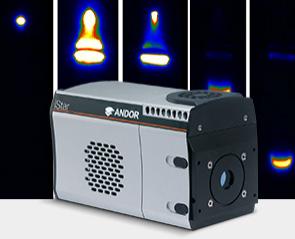Resources
 Part of the Oxford Instruments Group
Part of the Oxford Instruments Group
Expand
Collapse
Andor’s portfolio of intensified sCMOS & iCCDs, EMCCD and sCMOS cameras provide a wide range of high sensitivity, fast detection solutions for the fluid, flow and combustion diagnostics ‘home-builder’ research community. With increasing research activity around new areas of combustion research such as net-zero and low carbon ‘green’ fuel initiatives, these detectors especially benefit applications in the field of reactive and non-reactive flows, jets and flames, with analysis techniques including:
Andor high sensitivity cameras and modular spectrographs offer a comprehensive range of opto-mechanical interfaces, triggering and acquisition setup options to seamlessly integrate into a wide range of imaging and spectroscopy setups.




PLIF is used for the measurement of concentration/mole fraction of species such as Na, OH, NO, O2, CH, CO or acetone, localised temperature, velocity, and pressure:
Chemiluminescence is another technique used for flame studies. It is based on imaging chemically excited (as opposed to laser-excited like LIF/PLIF) species/radicals, e.g. OH*. Chemiluminescence is useful in situations where it is technically difficult or too costly to apply PLIF, e.g. optical engine diagnostics.
2D-PIV provides characterization of flow fields and turbulence dynamics in fluids. It relies on the imaging of light scattered by seeding particles added to the fluid/flow under analysis.
It uses a combination dual-pulse lasers and accurately synchronised detectors capable of dual imaging with extremely short inter-frame (e.g. sCMOS or gated sCMOS) to determine the two velocity components of features of interest in a single plane simultaneously. Variations include:
While CMOS/sCMOS cameras are detector of choice for PIV, gated intensified cameras such as iStar sCMOS can be used to better image (‘freeze’) supersonic flows, further remove strong unwanted background noise and enhance weak signals.
(Rotational) CARS is a non-linear spectroscopy technique used for combustion diagnostics including chemical species identification, species concentration measurement, but also to provide non-invasive map temperatures in combustion engines and flames.
Due to the weak nature of the CARS signal and need for multi-kHz acquisition rates, electron-multiplying EMCCDs are favoured for CARS thermometry